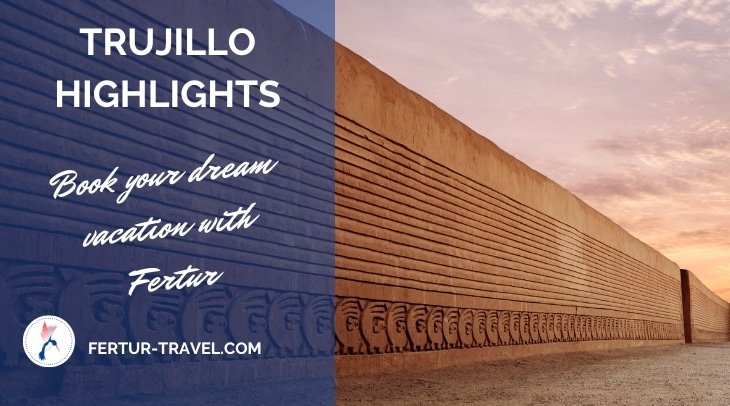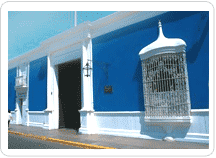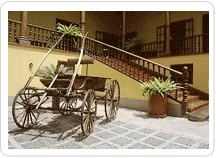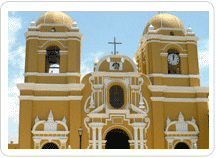

Welcome to Trujillo, a city brimming with history, culture, and architectural marvels. Located in the northern coastal region of Peru, Trujillo is renowned for its colonial charm, archaeological sites, and vibrant festivals. This guide aims to provide an in-depth look at the top attractions and excursions in Trujillo, offering a detailed and enriching experience for every visitor.
The Citadel of Chan Chan, a UNESCO World Heritage Site since 1986, is the largest mud city in pre-Hispanic Americas. This 28-square-mile (75km2) capital belonged to the Chimu Empire, which dominated the region from about 1000 A.D. until about 1470 A.D. It is the largest pre-Columbian city in the Americas, and the largest mud city in the world. Built around 1300 A.D., Chan Chan at its height had an estimated population of 60,000 people. Chan Chan remains a sprawling complex of adobe walls, courtyards, and intricate carvings. Visitors can explore its labyrinthine pathways and marvel at the sophisticated urban planning and artistry of this ancient culture.
The Temples of the Sun and the Moon are significant archaeological sites of the Mochica culture, which flourished between the 3rd and 7th centuries A.D. The Temple of the Sun, standing at 141.08 feet, is considered the largest pyramid in Peru. The Temple of the Moon, renowned for its stunning multicolored walls, offers a glimpse into the religious and ceremonial life of the Mochica people. These temples are located in the lower and middle valleys of the Moche River.
El Brujo is a sprawling archaeological complex with some of the most impressive friezes in the area, including multicolored depictions of life-sized priests, warriors, prisoners and human sacrifices. In 2005, archaeologists discovered the tomb of the mummy Señora del Cao, believed to be the first known female ruler of pre-Columbian Peru — likened to a South American Cleopatra. This Moche noblewoman is believed to have ruled the Chicama Valley 1,700 years ago.
This roughly 1,100-year-old adobe pyramid features walls profusely decorated in high relief with anthropomorphic and zoomorphic figures. The most striking is a two-headed dragon-like figure with an infinite number of feet, highlighting the rich mythology of the region.
Trujillo is home to several colonial mansions that reflect its rich historical tapestry:

Trujillo’s churches and monasteries are architectural gems that offer spiritual and artistic experiences:

This museum showcases archaeological objects linked to the pre-Hispanic cultures that thrived in the department of La Libertad, particularly those discovered at the Temple of the Moon.
The museum exhibits artifacts from the Moche, Chimú, and Recuay cultures, offering a comprehensive view of the region’s ancient civilizations.
The Toy Museum displays the transformation of toys through history, from pre-Hispanic times to the 1950s, providing a nostalgic journey for visitors of all ages.
Recently opened, this museum is the first of its kind in Peru, featuring works of modern art from both Peruvian and international artists.
Huanchaco is a legendary beach resort where the ancient Chimú prince Tacaynamo is said to have landed 800 years ago. Fishermen still ride on tiny reed boats known as caballitos de totora, mingling with surfers who enjoy the waves.
Recognized by surfers worldwide for having the longest left-handed wave, Puerto Chicama is a haven for surfing enthusiasts.
These beach resorts and ports feature traditional architecture, excellent surf, and nearby archaeological sites and carob tree forests.
This annual event is a fantastic opportunity to watch the Marinera, a traditional Peruvian dance, and experience the associated pomp and festivities.
Inspired by the Venice Carnival, this event traces its beginnings to the early 20th century and features colorful parades and celebrations.
Held on the beaches of Puerto Chicama (Malabrigo), this tournament attracts surfers from all over the world.
A vibrant celebration featuring handicrafts and art expositions, concerts, fashion shows, lively socials, and a grand parade with floats. The festival ends with a spectacular display of U.S. baton twirlers.
Organized by the Trujillo Peruvian Paso Horse Breeders and Owners Association, this show takes place during the Spring Fest and showcases the elegance and grace of the Peruvian Paso horse.
In conclusion, Trujillo is a city that seamlessly blends historical significance, cultural richness, and natural beauty. Whether exploring its ancient archaeological sites, colonial mansions, or vibrant festivals, visitors will find a wealth of experiences to enrich their journey. Join us in discovering the rich heritage and dynamic culture of Trujillo, a destination that promises to captivate and inspire.